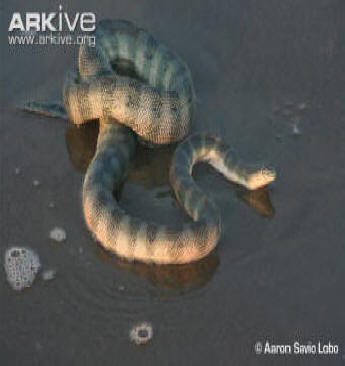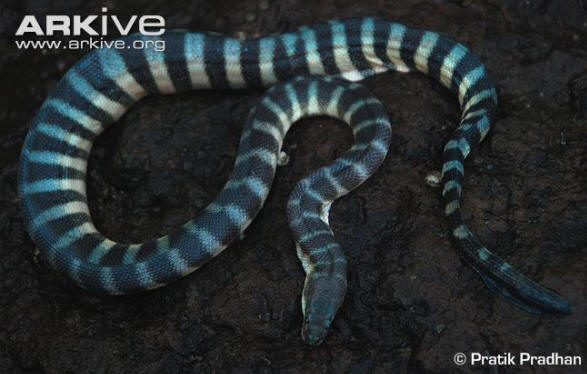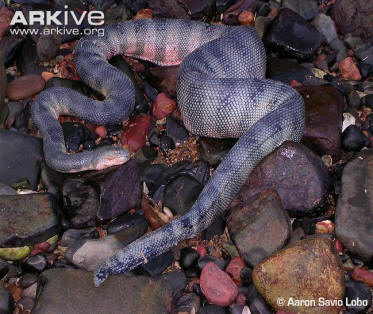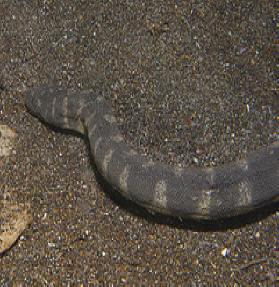Adaptation
 Aquatic
Environment- To adapt to living in aquatic environment they possess a
flattened, paddle-like tail for swimming. Another adaptation to
living underwater was the valve nostrils, which can be closed
when the snake dives underwater. This also keeps water
from entering their lungs. Like most sea snakes,
their lungs are stretched out in the body to allow the snake to
retain more oxygen for a long periods of time. They also can
carry out cutaneous respiration. This allows them to diffuse
oxygen from the water through their skin into the blood stream,
and then release carbon dioxide through the skin too. They also
have developed salt excreting glands under their tongue to
regulate the salinity in the snakes body. This is helpful since they
live in salt water environments. Since most
of their life is in water and swimming, the sea snake lacks an
expanded belly scales that most other snakes use for moving on
land.
Aquatic
Environment- To adapt to living in aquatic environment they possess a
flattened, paddle-like tail for swimming. Another adaptation to
living underwater was the valve nostrils, which can be closed
when the snake dives underwater. This also keeps water
from entering their lungs. Like most sea snakes,
their lungs are stretched out in the body to allow the snake to
retain more oxygen for a long periods of time. They also can
carry out cutaneous respiration. This allows them to diffuse
oxygen from the water through their skin into the blood stream,
and then release carbon dioxide through the skin too. They also
have developed salt excreting glands under their tongue to
regulate the salinity in the snakes body. This is helpful since they
live in salt water environments. Since most
of their life is in water and swimming, the sea snake lacks an
expanded belly scales that most other snakes use for moving on
land.

Olfactory
Advancements- Like all snakes, the beaked sea snake are
known for their use of smelling through there forked tongues.
They pass the particles they catch in their tongues to their
Jacobson's organ in their mouth for examination. The organ is
used as a auxiliary olfactory sense organ. It gives the
snake a sort of directional sense of smell and taste at the same
time. They keep this tongue in motion constantly by sticking it
out in the environment continuously.
Predation Advancements-
Like all snakes, the beaked sea snake lacks limbs. This causes
them to feed by swallowing their prey whole. This adaptation, of
a unusually flexible jaw mechanism, enables them to swallow
other organisms that are far larger than them diameter wise. Before any
swallowing can take place, the snake uses its very potent venom
to paralyze and disarm its prey. They locate their prey by
touching and by detecting movement, rather than relying on
vision mainly. This allows them to hunt and fed in low
visibility or at night. It also has been shown that snakes with
larger snout-vent prey on larger organisms with smaller
snout-vent. Learn more about feeding on the
Nutrition page.


Learn more about Nutrition next!
Back to Home Page.
To Contact me go to my Contact Page.